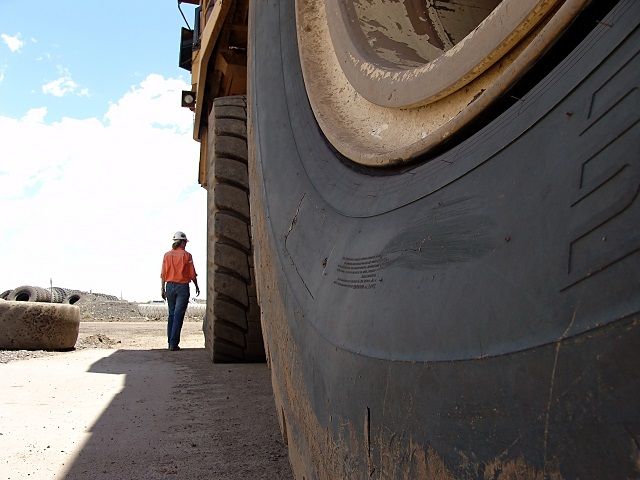Women in Mining - It’s 2020 why have we not done more?

Mining’s social licence to operate is under more scrutiny than ever before, and it’s time we did more for women in mining.
Let me recommend to you an excellent piece of research. It’s called “AusIMM Women in Mining Survey 2020” and it has just been released by the Australasian Institute of Mining and Metallurgy (AusIMM).
I have summarised some of the findings in this blog; however, if you want to read the whole report you can find it here.
Why do I think this topic is critically important?
The mining industry’s social licence to operate is under a level of scrutiny that is more intense than at any time in its history.
It hasn’t always been this way though.
Most mining industry veterans would agree that in decades and centuries past, there was widespread acceptance that it was almost inevitable for mining to be:
- Dangerous
- Dirty
- Environmentally damaging
- Damaging to community health
- Prioritised over indigenous land rights all around the world
- Loose with regulatory and compliance management, and
- A men’s club.
This acceptance was held not just by direct industry participants, but also the wider public.
It was seen as tough “men’s work”, essential to the rapidly industrialising world. It was also a time when many people had someone in their direct family involved in, or knew someone in, mining.
As a result, mining’s social licence to operate was rarely questioned and its pitfalls and externalities were largely accepted.
But, oh, how things have changed.
The pressure for mining to change
Today our industry is under pressure from all sides, and a growing proportion of the population has absolutely no connection to it. As a result, our social license to operate is being questioned like never before.
Paul Young, Global Mining and Metals Leader at EY, explains this succinctly in his report, "The Top Ten Business Risks Facing Mining and Metals"
Young makes a number of excellent points; however, it was his powerful description of an alternative future that especially struck me.
“We need to talk about the future of mining,” he said.
“Trusted, transparent and brand-savvy. Imagine a global miner superseding Apple for brand value.
“Imagine miners are trusted in the same way as leading consumer goods companies. In this future, miners have done what it takes to build trust by being transparent, listening to stakeholder concerns and acting on them. And they maintain that trust through open and continuous disclosure, supported by advanced technology that minimizes environmental footprints and accelerates rehabilitation.
“For example, sensors monitor production processes and keep an eye on environmental impact, rehabilitation activities, and safety practices. Outputs are streamed to the web so any stakeholder or investor can see what’s happening live. There are no secrets anymore.
“As a result of increased transparency and consumer awareness, miners are far more brand-savvy. Close attention is paid to the ‘look’ of mining operations, as well as the aesthetic impact.
“Just as agricultural companies now think about ‘paddock to plate’, miners consider branding across their entire operation, from exploration to the point of sale. Origin sourcing becomes a critical part of this branding.
“And along with better branding comes premium pricing.”
What has this got to do with women in mining?
I agree with the developing view that resetting some of the entrenched views of our industry held by the wider public is going to require a diversified response. We need fresh ideas, including from non-mining industry players, technologists, car companies buying mines and the like.
But while I agree, I also fear it just might be too slow at a time when social licenses are continually being torn up.
Let’s be open to all these external interventions, for sure. But the lowest-hanging fruit for injecting more diversification (and subsequently innovation) into the mining industry today is within our control right now. The answer, surely, is to get more technically trained women into senior leadership ranks.
Mining needs to do more to attract women
Let’s go back to the AusIMM report for a moment, for some insights into how the industry is going with this.
In short: not well enough, according to the views of 700 women in mining.
While the report found that progress has been made, there is still inadequate support for women in FIFO, DIDO and onsite roles. These are the roles critical to ensuring access to the technical experience and knowledge necessary to advance to senior leadership positions.
I accept there are more women on company boards, but most of them have come through business support functions: lawyers, accountants, human resources and the like. That is good but it is not enough.
Let’s add to that with more technically trained women
Supporting women in remote mining locations
The AusIMM report summarises clearly some of the things the industry as a whole is still not doing well enough to support women on remote resources sites. Some of the items mentioned include:
- Flexible work arrangements
- More extensive access to childcare
- Much improved site facilities.
As we emerge from our grand, enforced experiment in flexible working, I appeal to all senior mining leaders to consider policies that directly increase the number of women in senior site roles, paving the way to many more of them becoming board members in five to 10 years.
The difference it could make to our industry in terms of accelerating progress towards the alternative future described above could be immense. Isn’t that a future we can all get behind?
If you need help from industry experts skilled at enhancing diversity, through mining-focused executive search, recruitment and selection, drop me a line.
